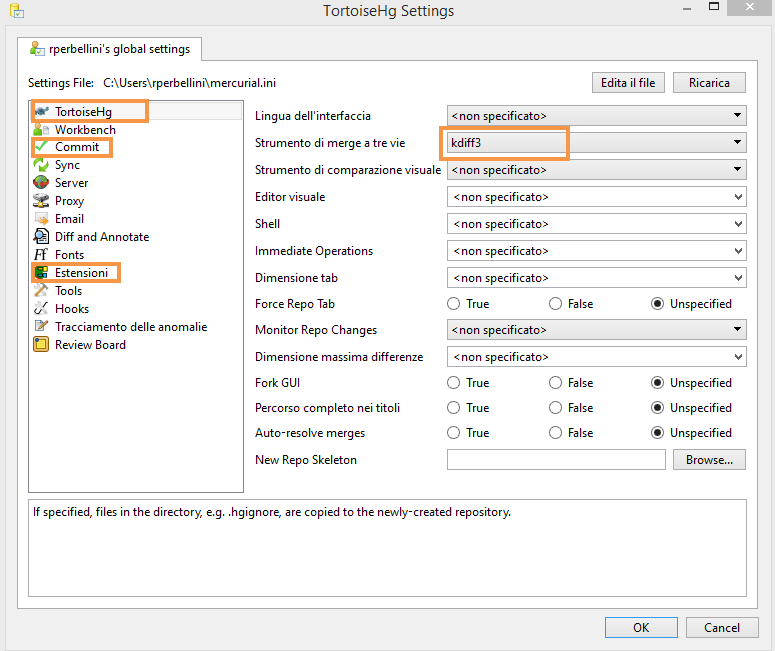
- #Tortoisehg settings prompt username how to
- #Tortoisehg settings prompt username update
- #Tortoisehg settings prompt username windows
#Tortoisehg settings prompt username update
How do I update my working directory in TortoiseHg? It is called the repository or store, while the directory containing the source files is called the working directory. This is where Mercurial keeps all its version data. Where does mercurial store its version data in a project?Īfter pressing Create, Mercurial creates a subdirectory in your project folder named.
#Tortoisehg settings prompt username windows
In the drop down list you will find all of the merge tools detected on your computer (kdiff3 is provided by the Windows installer) and a number of internal merge behaviors.

Next, select the TortoiseHg page and select the Three-way Merge Tool entry.
#Tortoisehg settings prompt username how to
How to merge TortoiseHg to Windows Installer? Ensure your merged work still builds and passes your extensive test suite. Finally, in the merge dialog, press Merge and then Commit. How to merge revisions in TortoiseHg 4.7.0?įrom the revision history viewer (TortoiseHg ‣ Workbench or thg log) open the context menu over the changeset which you want to merge and select Merge with local…. Right-click in the root of your project’s directory Then click on the Create button on the next dialog. Simply right-click in the root of your project’s directory (in Windows Explorer) and select TortoiseHg->Create Repository Here. How to create a TortoiseHg repository in Windows? If you neglect to configure a username TortoiseHg will ask you to enter one when you try to commit, which is the first time a username is actually required. First select the Commit page and enter a name in the Username field. This opens the TortoiseHg settings dialog, editing your global (user) configuration. Where do I enter a user name in TortoiseHg? The commit tool is very similar to the status tool and allows you to do all of the same tasks. Or skip adding new files as a separate step and have the commit tool add them implicitly. Or skip adding new files as a separate step and have the commit tool add them implicitly.Ĭheck the files you want to add and select Add from the file context menu. Check the files you want to add and select Add from the file context menu. You can also open the status tool by selecting TortoiseHg ‣ View File Status. How to check the status of files in TortoiseHg?Ī dialog will open for you to check the selected files and accept the add operation.


If the prefix matches part of the repository url then the specified username will be used. How the settings file works is gh or bb can be anything and is just a way to group the auth settings together. How does the settings file work in TortoiseHg? Mercurial comes with a small built-in webserver that you can start with hg serve and which will let you browse the repository history using your normal webbrowser.

Mercurial speaks two network protocols: HTTP: the protocol used by normal webservers. This is why Mercurial can access remote repositories over a network connection. How is mercurial used to access remote repositories? You also have the option of push/pull from a different repository as well. When you’re ready you can push one or more commits to a central repository other developers also work with, or pull new commits from the central repository to your local repository.


 0 kommentar(er)
0 kommentar(er)
